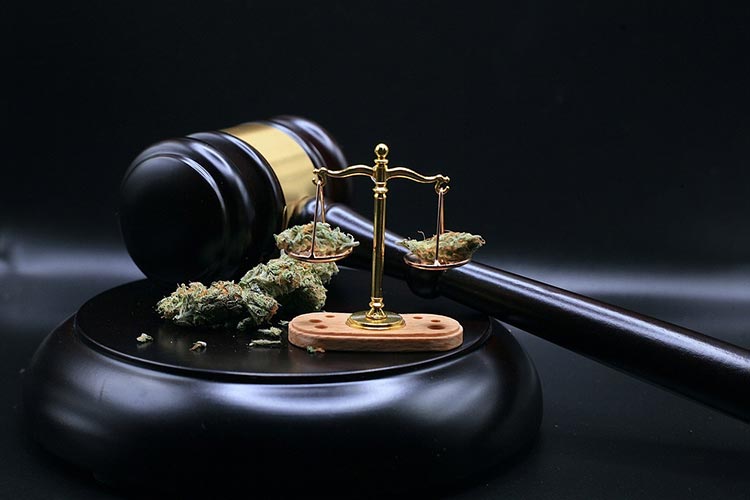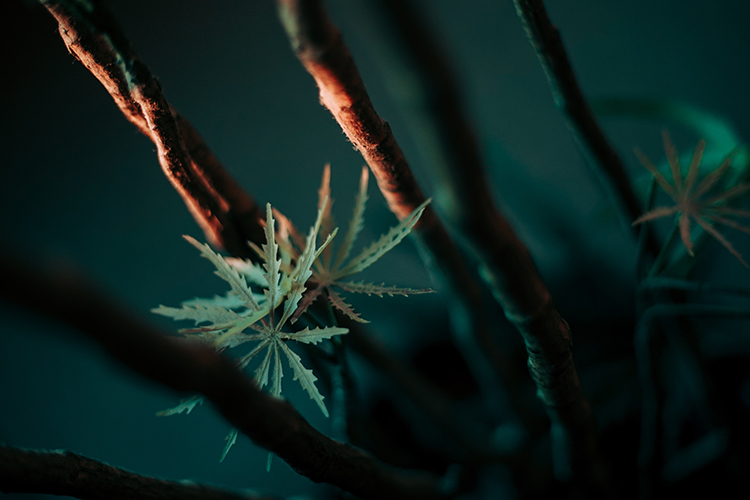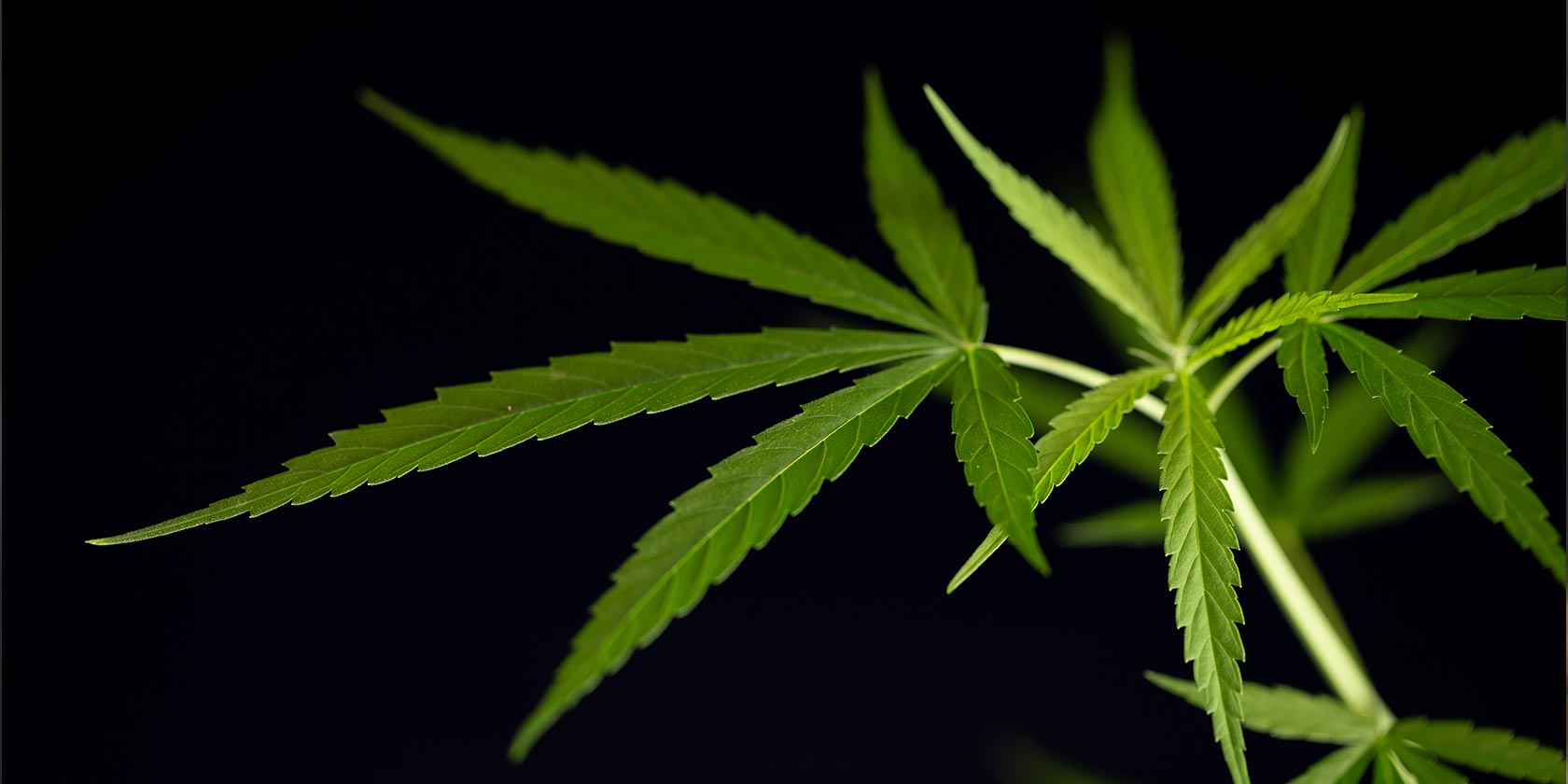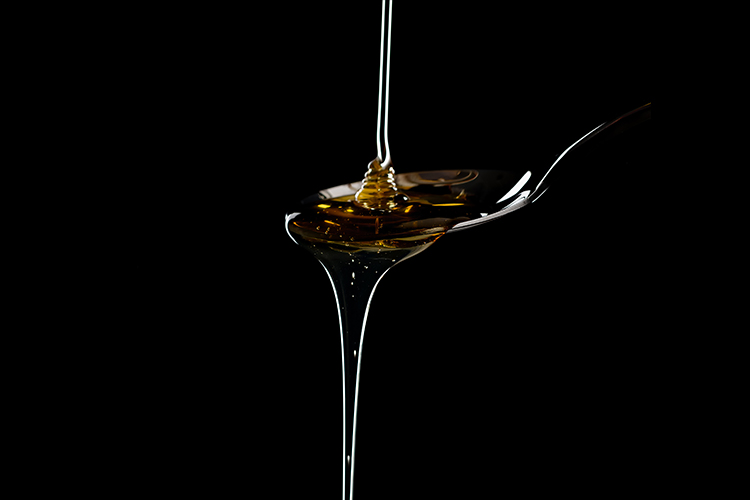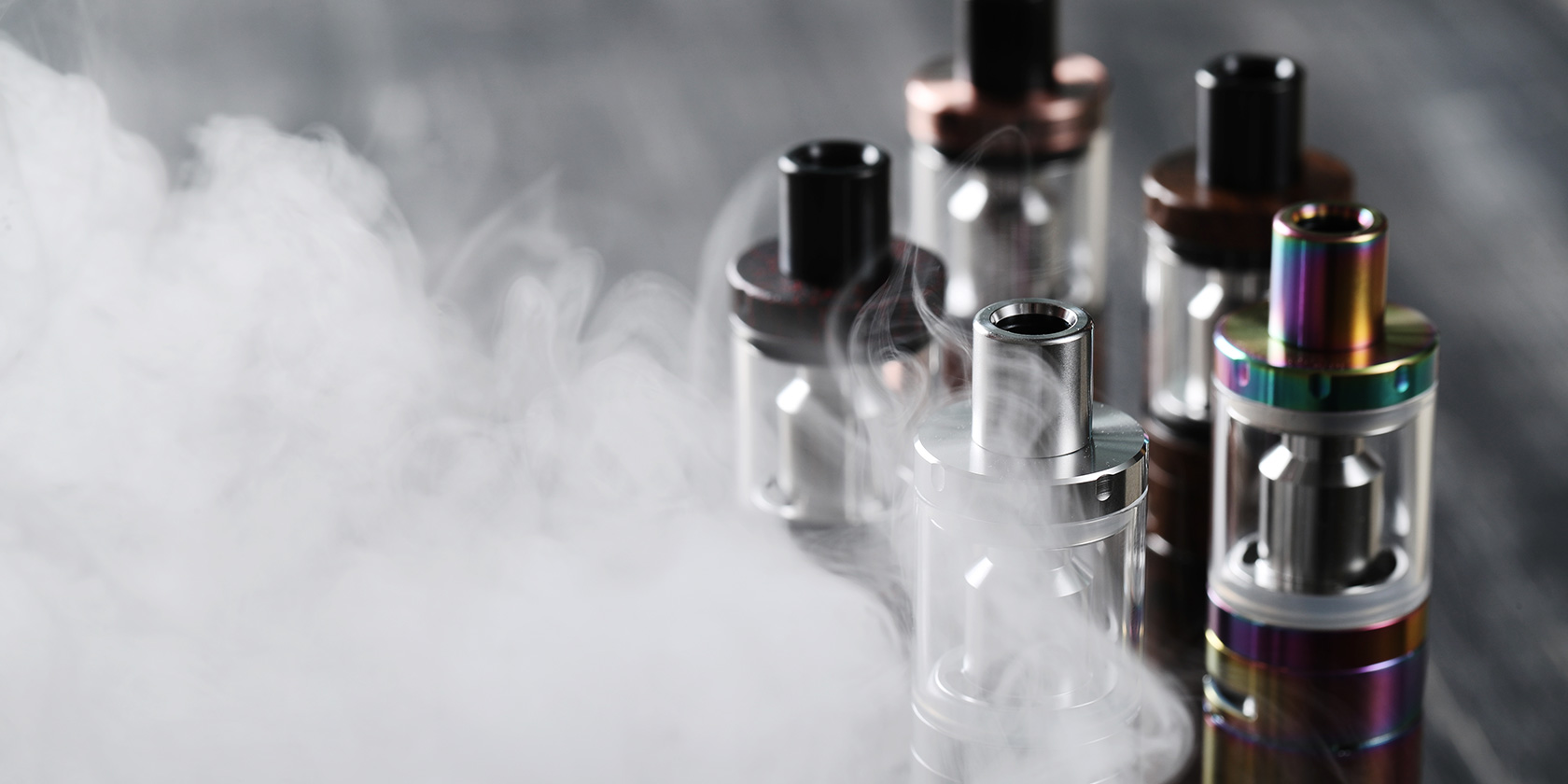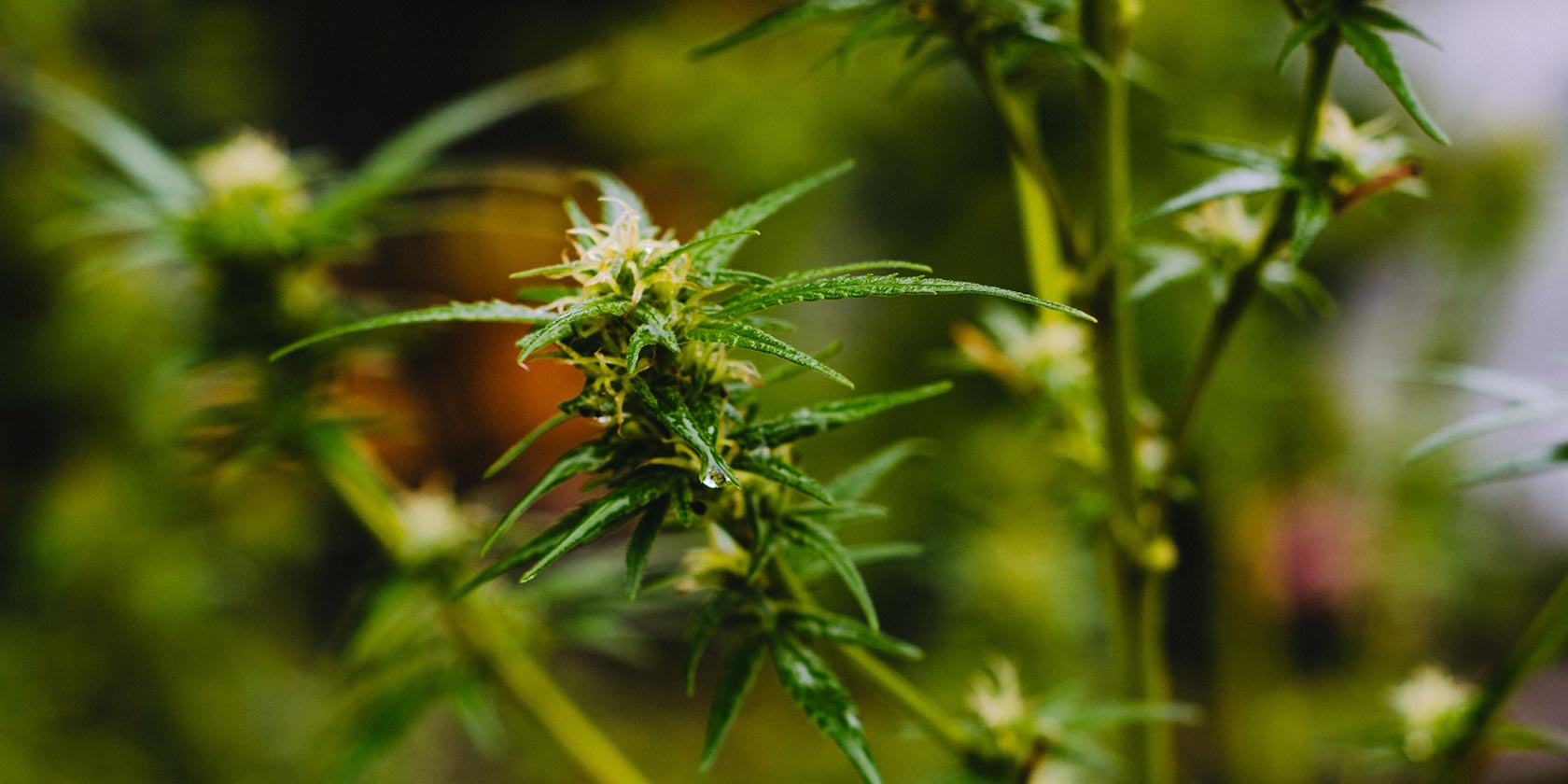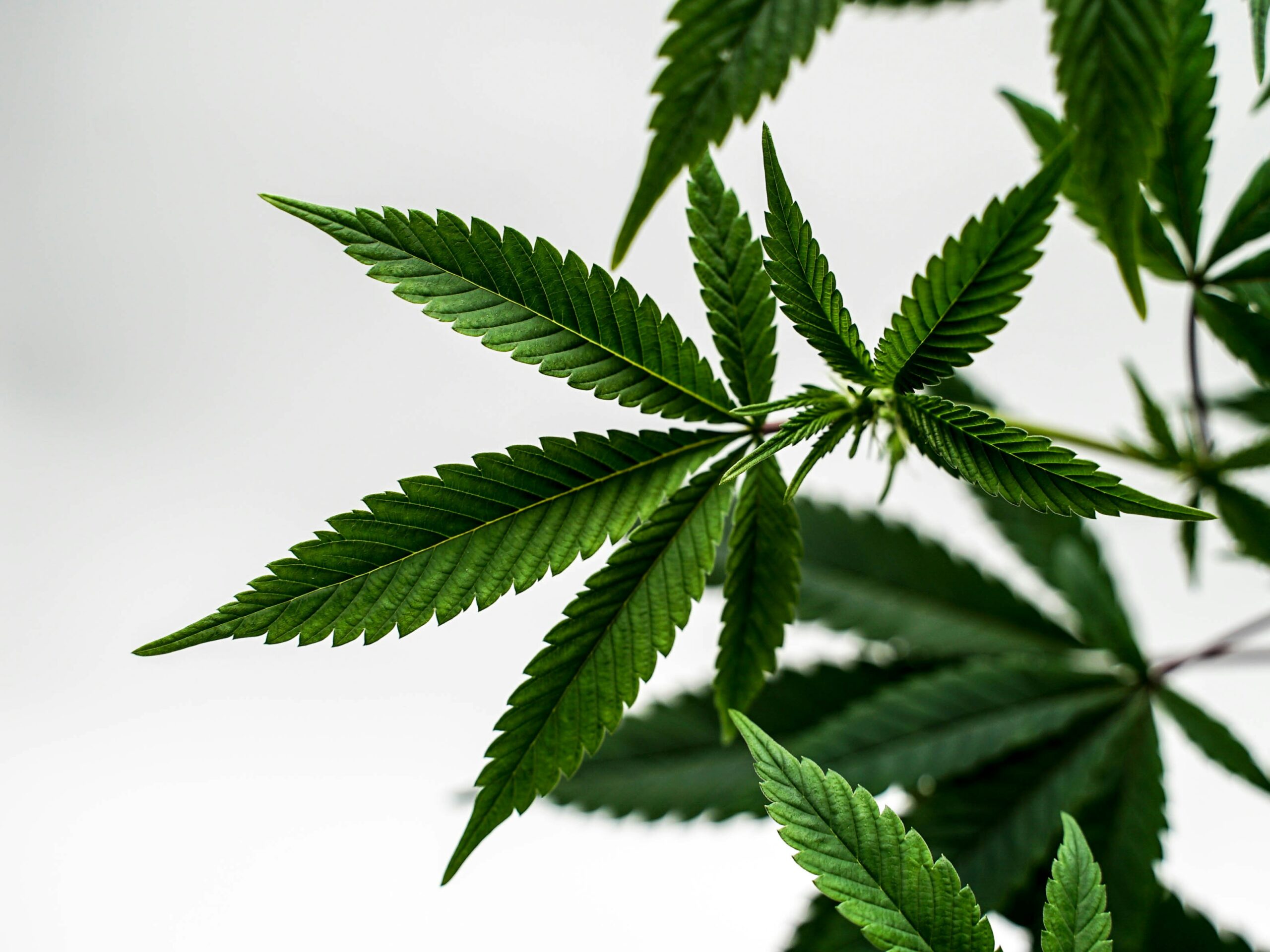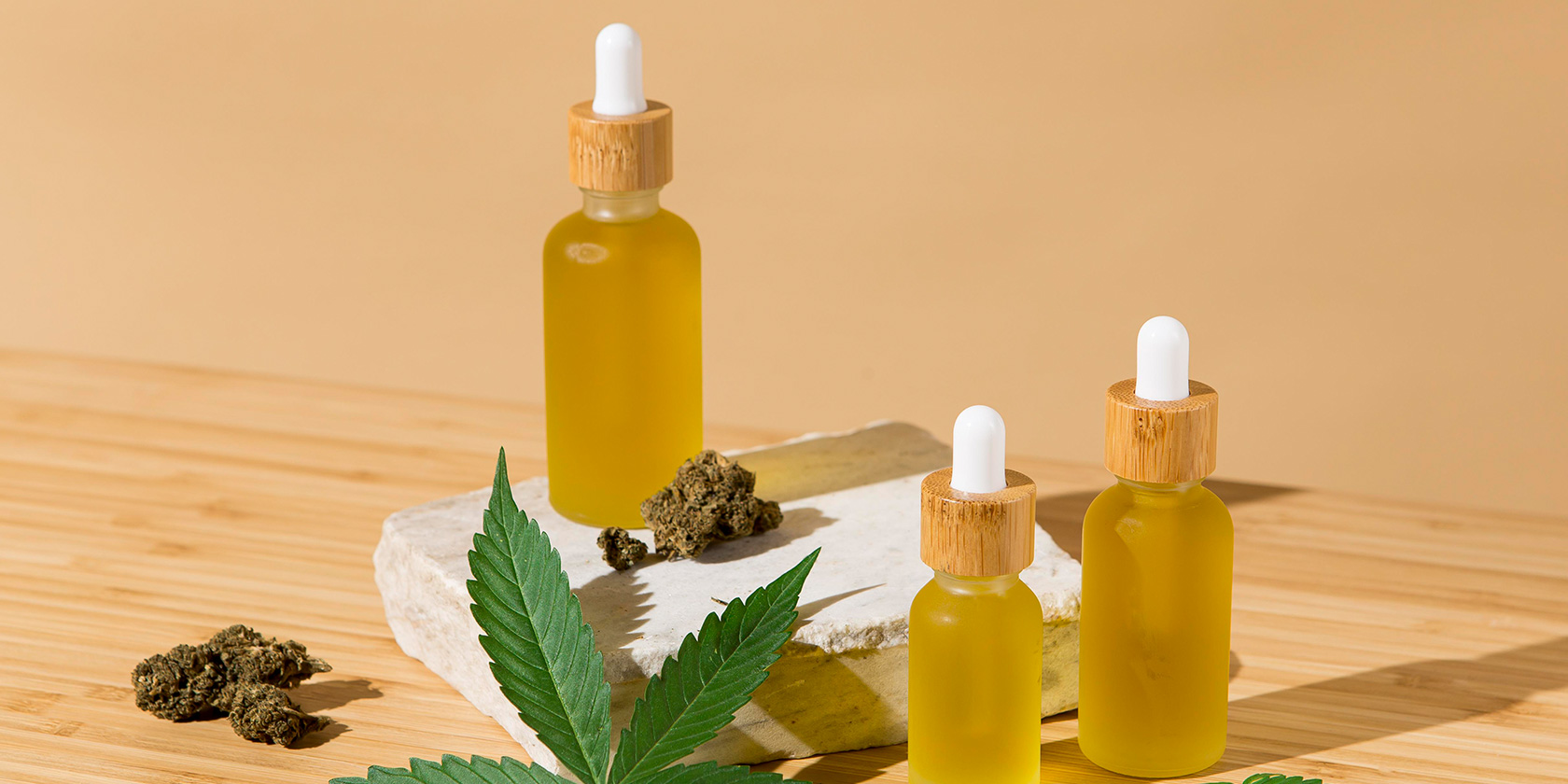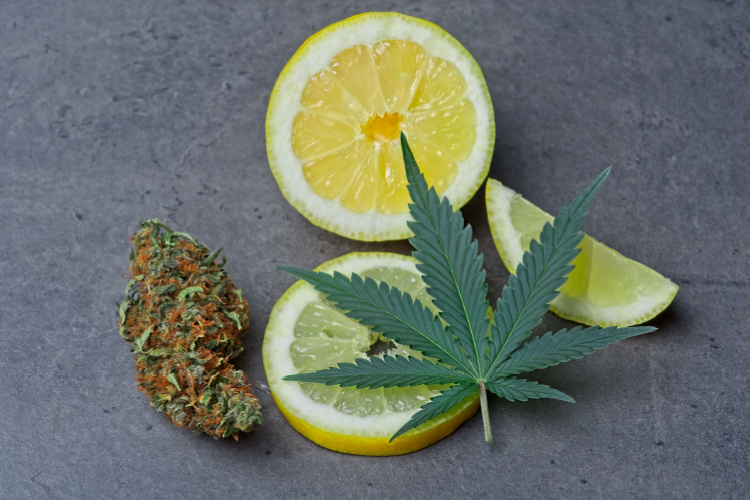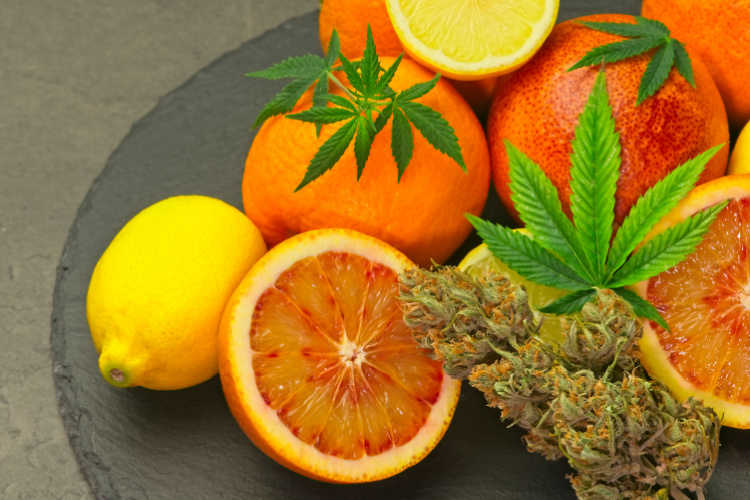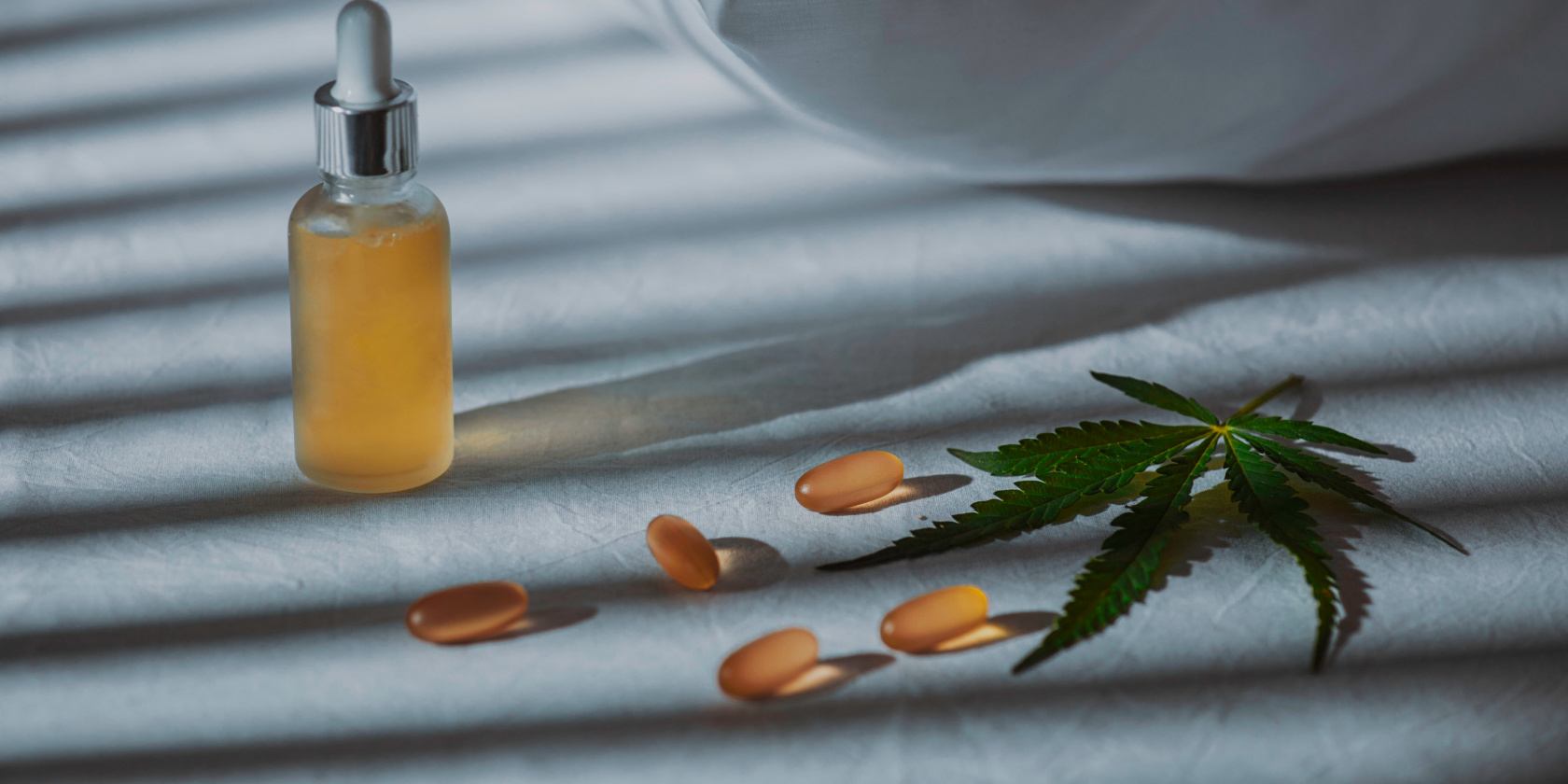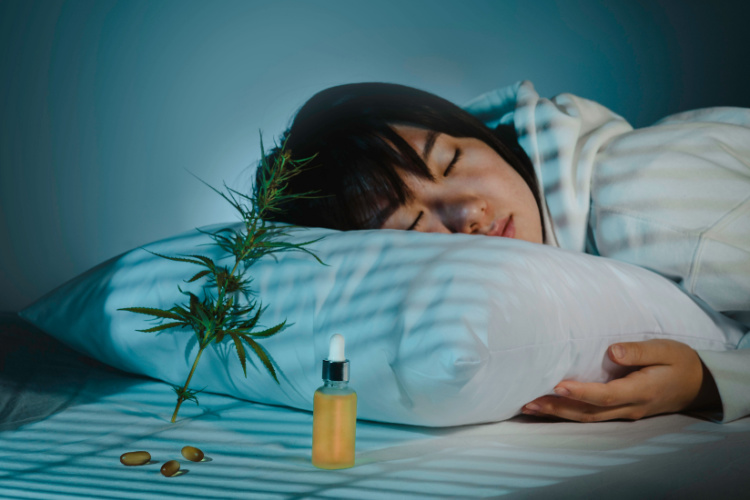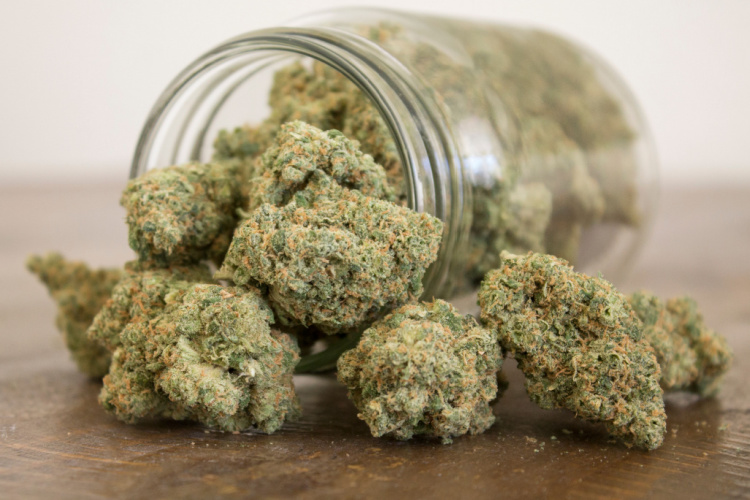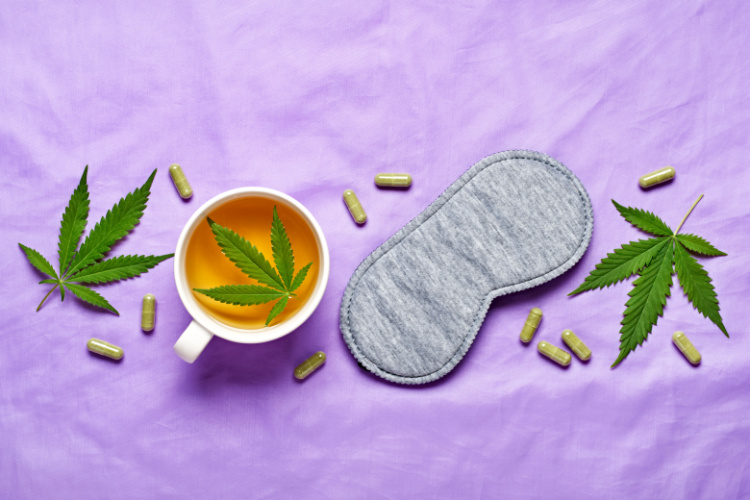Recreational Marijuana in Maryland: Everything You Need to Know
In case you missed it, Saturday, July 1 of 2023 was a big day for our neighbors in Maryland: The start of adult-use sales in The Free State. The result of a 2022 ballot initiative, the new law gave state regulators legal grounds to begin recreational sales as an adjunct to the state’s existing medical cannabis program which began operating a decade before.
Here at Takoma Wellness, we’re thrilled to welcome Maryland recreational marijuana customers to our family-run dispensary. As such, we’d like share some details of the new Maryland law, as well as highlighting some important differences between Maryland and District regulations (including some very special cannabis products you just can’t find in Maryland).
Adult-Use and Medical Marijuana Laws in Maryland
The new Maryland recreational marijuana law is an important acknowledgement: That cannabis offers a safe, sustainable, and all-natural medicine and way to unwind or enjoy time with family and friends. And for Maryland residents as well as tourists to the region, it’s a reminder that the state’s cannabis industry—which could reach $1.7 billion by 2024—is an important driver of the local economy.
Who Can Buy Weed in Maryland?
Let’s dive into some specifics around the new Maryland recreational marijuana regulations. Who’s eligible to buy recreational cannabis in Maryland? All adults 21 and over are now legally permitted to purchase marijuana from licensed dispensaries. To make such a purchase, they’ll need to provide a valid government-issued picture ID, such as a driver’s license or a passport.
Is Maryland’s Medical Marijuana Program Affected?
What about the existing medical program in Maryland? Patients may continue to obtain cannabis from licensed dispensaries, and individuals 18 years or older may continue to register for the program. In addition, the new laws establish patient-only operating hours or dedicated service lines, product availability, and other accommodations to support registered patients in accessing the medicines they need.
Where Can You Consume Weed in Maryland?
Under Maryland law, it’s illegal to use cannabis while driving, either by a driver or a passenger. It is also illegal to smoke cannabis or hemp in public spaces such as parks, sidewalks, streets, bars, restaurants or in public transportation. Adults 21+ can consume cannabis in private homes and on private property. If you rent an apartment or are staying in a hotel or rental vacation home, be sure to know their policies before consuming cannabis there.
How Much Weed Can You Buy?
Individuals will only be able to purchase up to the personal use amount authorized under law. This amount is up to 1.5 ounces of cannabis flower (including joints and pre-rolls), 12 grams of concentrated cannabis (vape products), or a total amount of edible cannabis products that does not exceed 750 mg of THC.
As we often remind those new to cannabis: “Start low, go slow!” Remember, you can always have more cannabis, but you can’t have less. Let’s all remember to play it cool and keep our roads as safe as possible.
Buying Weed in Maryland vs DC: The Takoma Wellness Difference
With the recent change in Maryland recreational marijuana laws, we’re excited to offer both our deep experience serving the region as well as a truly unique lineup of products.
From slow-cured, small-batch, hand-trimmed craft cannabis to the potent and flavorful concentrates that aren’t available in Maryland, it’s an exciting time for the local cultivators, processors, and manufacturers we partner with. Here are the major differences between what you’ll find in DC versus Maryland:
- You Can Buy More: You can purchase up to 8 ounces of cannabis flower in DC, versus 1.5 ounces in Maryland
- You Pay Less Tax: DC cannabis tax rates are 6% versus 9% in Maryland
- Better Product Selection: Concentrates such as hash, RSO, rosin and shatter, along with specialty products such as infused pre-rolls aren’t available in Maryland, but are abundant in DC
- Higher Quality Cannabis: DC’s cultivators focus on craft cannabis: slow cures, small batches and hand-trimmed flower
- Consistency and Convenience: Takoma Wellness is staffed to ensure you won’t face long lines. Despite being the most popular dispensary in the DMV, wait times are non-existent, nor are product shortages in DC’s more mature and established market
On a related note, it’s worth pointing out that Maryland dispensaries deal primarily in cash. Here at Takoma Wellness we accept cash—there’s an on-site ATM—but we can also offer the convenience of credit cards (American Express, Discover, Mastercard and Visa), Dutchie Pay, Aeropay, and Hypur.
If you’re interested in exploring how DC does cannabis differently, we’d love to help. We’re conveniently located at 6925 Blair Rd. NW, just a block from the Red Line Takoma Metro Station and near many bus lines. As Washington’s #1 family-run medical marijuana dispensary, we draw upon a decade of experience helping our customers get the very most from cannabis. Come by our dispensary, or drop us a line.
We look forward to seeing you!
Maryland Marijuana Laws: FAQs
Q: Can you buy from a dispensary without a medical card in Maryland? DC?
A: Yes to both. In Maryland and DC, adults aged 21 and older may purchase cannabis products from licensed dispensaries without a medical card. The only difference is that in DC, those without a medical card must self-certify medical use by filling out a simple form online.
Q: Is recreational marijuana legal to buy in Maryland?
A: Yes. Recreational users who are adults 21 and older may possess up to 1.5 ounces of cannabis flower (including joints and pre-rolls), up to 12 grams of select concentrated cannabis products (such as vape products), two cannabis plants, or any cannabis product containing up to 750 milligrams of THC (such as edible products) at any given time.
Q: What are the rules for recreational marijuana in Maryland?
A: Recreational cannabis customers can purchase from licensed dispensaries in Maryland and must show a government-issued ID to prove they’re 21 or older.
Q: Do you need a prescription to buy marijuana in Maryland?
A: No. With the new Maryland marijuanas law, adults 21 and over can purchase cannabis products without a recommendation from a doctor.
Cherry Diesel Profile: A Fun and Funky Strain You'll Love
If you’ve spent any time in the cannabis world, you’re probably familiar with the strain Sour Diesel, a true cannabis legend since its introduction roughly 30 years ago. And while Cherry Diesel shares some basic attributes with other Diesel strains, it’s unique on its own.
Below, we answer common questions and more, including:
- Is Cherry Diesel indica or sativa?
- What are some Cherry Diesel strain effects?
- Cherry Diesel’s cannabinoids and terpenes
If you’re looking for an energizing and flavorful strain to kick stress to the curb and boost mood, this is one you’ll want to know better.
What Is Cherry Diesel?
Cherry Diesel is a vibrant and uplifting strain. It’s as beloved for putting a smile on one’s face as it is for clearing away the cobwebs of stress. First bred by California-based MTG Seeds, Cherry Diesel is a worthy inheritor of the storied line of Diesel weed strains.
As with all cannabis strains, Cherry Diesel derives many of its attributes from its parent strains: Turbo Diesel—an energizing, giggle-making hybrid—and Cherry OG, a potent variety known for delivering full-body euphoria and thrilling cerebral stimulation. But like all offspring, it also brings something new to the equation.
Is Cherry Diesel Indica or Sativa?
The terms indica and sativa are no longer as botanically accurate as they once were, but they’re still useful shorthand when describing a given strain’s effects. Indicas are generally associated with a relaxing “body buzz” that can melt away stress, aches, and pains, while sativas are usually described as cerebrally stimulating, even imparting a burst of creative energy and uplift.
Today, many (if not most) strains are blends or hybrids of the two styles, and Cherry Diesel is no exception. You’ll experience a nice body high, but most of the juice here is in the mental realm, where you’ll likely experience an uplifting spark and the energy to tackle creative challenges with a new level of determination.
What Are Cherry Diesel’s Effects?
Since Cherry Diesel—like most varieties in the Diesel strain family—is so energizing, it’s especially popular for daytime use. That buzzy uplift is also what makes it so effective at chasing away stress and uplifting mood. As several studies suggest, cannabis strains such as Cherry Diesel may be helpful in soothing many of the symptoms associated with anxiety and depression.
Many folks feel Cherry Diesel helps them to feel more social and outgoing, but dosage is important since consuming too much THC can have opposite effects, inducing anxiety or paranoia. As with all cannabis, low doses often offer greater benefits—so start low and go slow!
Cannabinoids and Terpenes
As with every strain, the greatest single indicator of Cherry Diesel’s effects is its cannabinoid profile. THC is the primary cannabinoid and the one most associated with the cannabis plant’s effects—including its euphoric “high.” While precise THC contents vary from harvest to harvest, Cherry Diesel delivers a healthy 23% on average.
Terpenes are aromatic “essential oils” that play a major role in determining the scents of specific cannabis strains. The primary terpene found in Cherry Diesel is caryophyllene, a spicy and pepper-scented terpene linked to powerful analgesic and anxiety-relieving effects. Because it binds to the cannabinoid receptors found throughout our bodies more readily than many other terpenes, caryophyllene is often found in many topicals and balms.
What does Cherry Diesel Look and Smell Like?
This strain is bright green, covered in orange pistils, and sticky, cannabinoid-rich trichomes. Cherry Diesel makes quite a visual impression, but that’s nothing compared with its scent and flavor: A big hit of ripe cherry crossed with the unmistakable aroma of Diesel fuel. The distinctive fruit and funk this strain offers make it quite something to sniff and smoke.
Growing Cherry Diesel: Tips and Tricks
According to veteran growers, Cherry Diesel produces dense, sticky, and aromatic flowers within 8 - 9 weeks under warm, humid conditions. Unlike some Diesel weed strains, it’s considered resilient and relatively easy to grow.
Thriving best in temperatures between 70 and 85°F (21 - 29°C) and a humidity range of 40 - 60%, Cherry Diesel is equally happy when grown using hydroponic or soil-based setups. In either case, be sure to provide enough space for the plant to have growing room, and ensure the roots are free from excessive water accumulation so they don’t rot.
Get Cherry Diesel at D.C.’s Favorite Dispensary
Most fans of Cherry Diesel agree that it tends to be more stimulating than soothing. As a result, many turn to it for daytime use, when that euphoric spark can help people tackle tedious projects or face creative challenges with a little more vigor.
As the District’s #1 family-run dispensary, we’re on a mission to help our customers deepen their cannabis knowledge with in-depth articles on the myrcene terpene, using cannabis for better sleep, and other topics in our cannabis blog.
Check out our menu to see which Cherry Diesel or other Diesel strains we currently have in stock. If you have further questions about Cherry Diesel (or any other cannabis-related questions), just ask—we’re here to help.
Strain Profile: Get to Know Peyote Cookies
What’s in a name? Given that peyote is a cactus associated with long-lasting, psychedelic trips, you’d be right to expect the Peyote weed strain to deliver an intense, euphoric high. Better known as Peyote Cookies, it’s a hybrid that imparts deep, full-body relaxation and relief from discomfort and stress.
Below, learn everything everything there is to know about the Peyote Cookies strain, including:
- Is Peyote Cookies indica or sativa-leaning?
- What are some benefits and effects of Peyote Cookies?
- What are Peyote Cookies’ cannabinoids and terpenes?
We’ll also answer grow questions for budding homegrowers and curious cultivators.
What Is the Peyote Cookies Strain?
Peyote Cookies is derived from two noteworthy parents: Peyote Purple and Cookies Kush. From the same line as cannabis legend Bubba Kush, Peyote Purple is known for its beautiful colors and coffee-vanilla flavors, along with its heady, deeply calming high. Cookies Kush—winner of High Times' 2014 Amsterdam Cannabis Cup in the "Best Coffeeshop Strain" category—is just as noteworthy, with a memorably sweet flavor and deeply relaxing head and body effects.

Heavy, long-lasting, and decidedly euphoric, it’s no wonder that Peyote Cookies has won such a devoted legion of fans. “Tingly” and “relaxed” are two words many use to describe this cultivar, a near-perfect nighttime treat for those who want to leave stress, discomfort, and other symptoms at the door.
Is Peyote Cookies an Indica or Sativa?
The terms indica and sativa have become inaccurate on a technical level since most strains on the market are hybrids. But they’re still a useful shorthand way to describe the effects that different strains of cannabis can have on us.
Indicas—such as the classic “Kush” family of strains—are generally associated with a “body high” that’s great for melting away stress, muscle aches, and physical pain. Sativas, like the legendary Jack Herer strain, are known for imparting a burst of creative energy and uplift.
While the Peyote Cookies strain is technically a hybrid, meaning it combines attributes of the two styles, it tends towards the indica side, so you can expect a big blast of euphoria and delightful, full-body relaxation.
Peyote Cookies Benefits
In terms of potential therapeutic benefits, Peyote Cookies and its powerful euphoria are a go-to for those seeking to tame pain and discomfort. As a growing number of studies suggest, cannabis can help manage physical discomfort and offer an alternative to many prescription pain medications.
The Peyote Cookies strain is also often mentioned as a potential response to sleep trouble. If you go this route, remember that less is often more, with many people reporting greater benefits from smaller dosages.
What Does Peyote Cookies Look and Smell Like?
Given the psychedelic reference in the Peyote Cookies strain’s name, it’s no surprise that appearance-wise, it more than lives up to the hint. Depending on the growing conditions and post-harvest cure, Peyote Cookies is one wild-looking strain with colors ranging from vibrant mint green to purple and even red.
Flavorwise, the strain delivers another surprise. The tropical aromas of ripe guava and earthy coffee mix with a lush hint of vanilla, adding up to one very delicious smoke.
Cannabinoids and Terpenes
As with all strains, Peyote Cookies’ attributes are thanks to the strain’s terpenes, the fragrant “essential oils” that play a crucial role in determining the aromatic and flavor profiles of given cannabis strains. The primary terpene in Peyote Cookies is pinene, a resinous and earthy terpene linked to some very intriguing anti-inflammatory, anti-oxidant, and neuroprotective effects.
In terms of THC content—the primary cannabinoid and the one most associated with the cannabis plant’s euphoric “high”—the Peyote Cookies strain is approachable, with levels varying from roughly 17% to a high of 23%, depending on the harvest.
Growing the Peyote Cookies Strain: Tips and Tricks
According to those who’ve tried it, Peyote Cookies is easy and fun to grow. Known for producing squat, indica-like bushes, it is highly resistant to mold and does equally well indoors and out. As a special bonus, you’ll receive a virtual light show of vibrant reds and purples as the flowers mature.
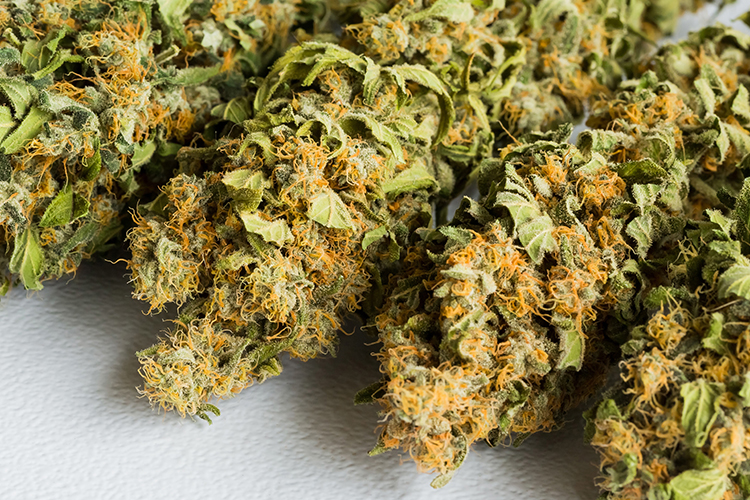
Flowering occurs in 55 - 60 days, and Peyote Cookies produces a large yield of highly aromatic, vanilla, and coffee-scented flower. If you’re growing outdoors, plan to harvest around the end of September or early October, depending on local conditions.
Get Premium Genetics from D.C.’s Favorite Dispensary
Heavy, euphoric, and beautiful to behold, the Peyote Cookies strain is a favorite for sinking into deep relaxation, taming discomfort and other symptoms, and delivering a long-lasting euphoric high. While it’s technically a hybrid strain, you’ll experience more body-centered indica-style effects. As a result, you’ll probably want to save it for a laid-back evening.
Are you curious about trying Peyote Cookies for yourself? Check out our menu to see if we have Peyote Cookies in stock, or ask our friendly budtenders for similar selections. We stock a wide selection of the District’s very best flower.
Want to go deeper? Broaden your cannabis knowledge with in-depth articles on Rick Simpson Oil (RSO), the terpene limonene, and other cannabis-related topics in our blog.
As the District’s #1 family-run dispensary, Takoma Wellness’s mission is to help our customers find the perfect strains and products for their goals. If you have further questions about the Peyote Cookies strain or any other cannabis-related questions, just ask—we’re always here to help.
What Is Shatter? A Unique Weed Concentrate Worth Knowing
There’s no shortage of ways to enjoy cannabis today. And while flower, vapes, topicals, and edibles are all popular products at our dispensary, concentrates take the cake in terms of potency. They can offer a large dose of cannabinoids in a small quantity, which may be especially useful for patients managing chronic symptoms, while other concentrates contain flavors and aromas you just won’t find anywhere else.
There are many different concentrate varieties out there—from badder to wax to rosin—but cannabis shatter has been a fan favorite since its introduction in the 1990s.
So what is shatter, exactly? And what makes it so unique? Keep reading to uncover what shatter is, how it's made, the best ways to enjoy it, and tips for keeping it at its peak. Ready? Let’s dive in.
What Is Shatter?
One of many different styles of cannabis concentrate, shatter refers to a dense, concentrated cannabis extract with a texture and translucence similar to a windowpane. It can range from a lighter, brighter yellow to a deeper, almost orange color.
Although not all shatter products have a firm glass-like feel, they are typically the most solid of the major concentrate types. Generally, if shatter has more THC than THCA (an acidic precursor that is transformed into THC when you smoke or vape it), it's more reminiscent of taffy, while those with high THCA are extremely brittle.
And while the origins of shatter are generally hazy, most accounts point to a Canadian extractor by the name of BudderKing, who popularized budder and shatter in the late 1990s.
How Is Shatter Made?
First off, making shatter is a highly specialized process requiring advanced machinery, professional training, and a controlled lab setting. There have been cases of explosions, injuries, and deaths from attempts to make shatter and other concentrates in uncontrolled environments, so it's best to leave these processes to professionals.
To make shatter, technicians use specialized equipment to cover cannabis plant material with a solvent, typically butane. The solvent is used to extract the active cannabinoids and flavorful terpenes from the plant material. Later, extractors evaporate the butane with heat and vaporization, so all that's left is a highly concentrated, resinous substance.
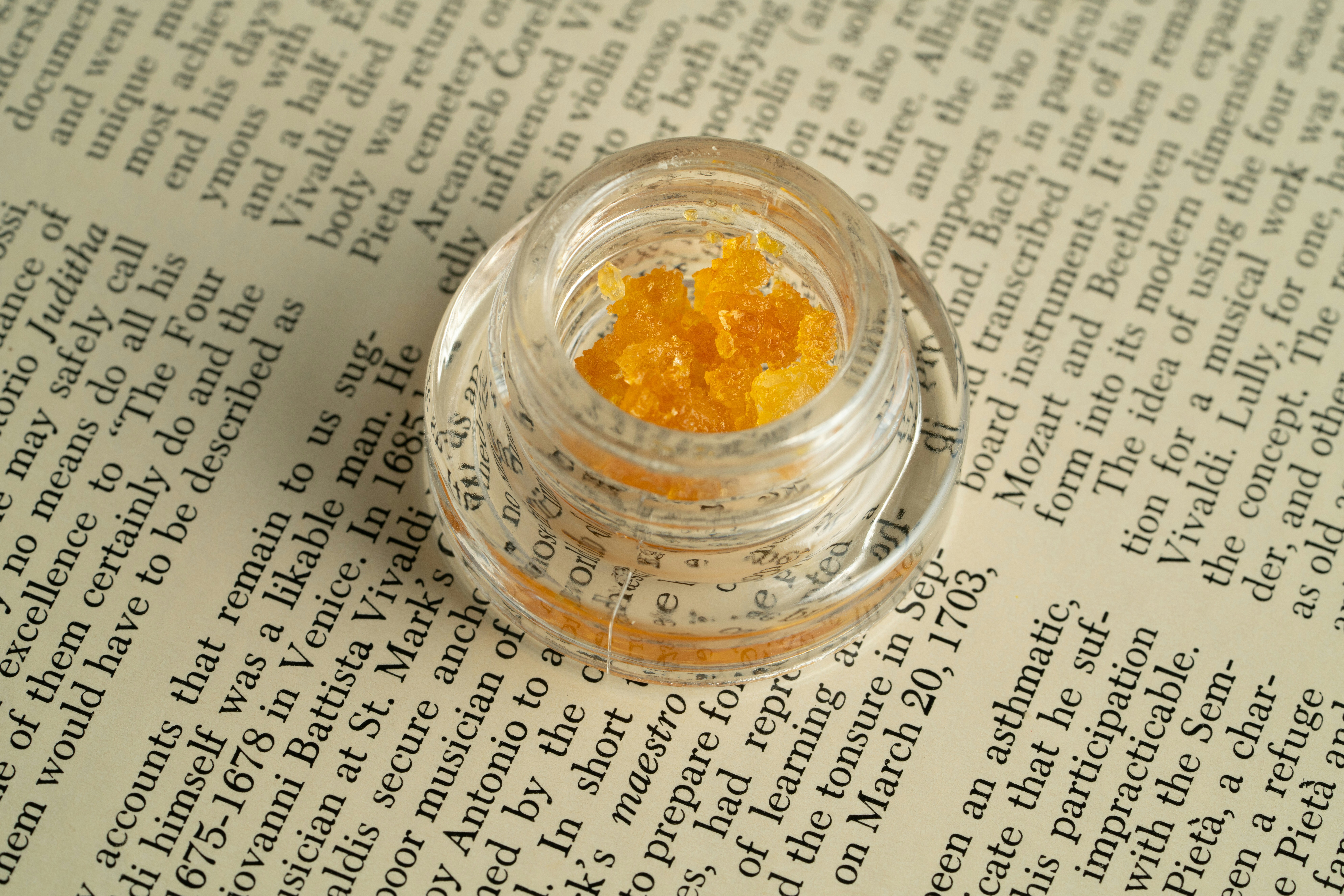
To give shatter its namesake appearance, technicians purge the remaining solvents used for extraction in a stable, low-temperature environment while avoiding any further whipping, mixing, or agitation.
How to Use Shatter: 4 Popular Methods of Consumption
From high-tech gadgets to simple, on-the-go solutions, there are a number of ways to enjoy shatter, and understanding each can enhance your experience. So let’s dive into some of the most popular ways to consume shatter.
1. Dab Rigs
Shatter has become synonymous with dabbing, which refers to vaporizing a small amount of cannabis concentrate (a “dab”) on a hot surface. Dabbing is done with a specialized bong-like piece of equipment called a “dab rig” and a blowtorch to heat a surface (the “nail”) before carefully adding a small amount of shatter and inhaling the vapor. Dabbing gives you an intense burst of cannabinoids, resulting in powerful and near-instantaneous effects.
2. E-Rigs, E-Nails and Dab Pens
Aside from standard dab rigs, electronic rigs (aka e-rigs) and e-nails let you dab your shatter without the safety risks of using a blowtorch. Some of these electronic products also have precise temperature settings for greater security and customizability. Dab pens are another alternative product that offers a similar experience to traditional dabbing in a portable
set-up.
3. Vaporizers
Speaking of portability, many concentrate-friendly vaporizers now work well with extracts like shatter. Vaping through one of these devices is similar to using a flower vaporizer, but you have to load a concentrate-specific chamber with the shatter. Also, don’t forget that concentrates have significantly more cannabinoids gram-per-gram versus traditional vape carts or pods, so vapers don’t need as much shatter to experience potent effects.
4. Using Shatter as an Add-On
Lastly, you can use shatter as an “add-on” to other cannabis products by adding a small amount of shatter to a joint for an extra kick of potency and flavor, for example..
Why Choose Cannabis Shatter?
With so many concentrates to choose from, you might be curious about what sets shatter apart.
Unique Look and Texture
The primary feature distinguishing shatter from other extracts is its look and consistency. People who gravitate to shatter love its brittle texture, which is both easy on the eyes and easy to break apart and dose. By contrast, "soupier" concentrates like wax, budder, and live rosin are a bit messier to work with compared with shatter.
Versatility
Versatility in consumption methods is another reason why some people might prefer shatter. While dabbing is a popular way to enjoy shatter due to its ability to deliver strong effects quickly, it's not the only method, as we saw above. Shatter can also be vaped, offering a more discreet and convenient option, or added to flower for potency and flavor.
Potency
Finally, shatter is renowned for its exceptional potency, often exceeding 80% THC, which provides a more intense and immediate experience compared to other forms like wax or oils. Of course, that doesn't mean it's always stronger than other comparable concentrates.
You will have to look at third-party lab reports for different concentrates to compare cannabinoid and terpene levels for an accurate read on the expected effects and flavors. However, in most cases, small amounts of shatter are enough to deliver very potent experiences, so it’s important to use concentrates intentionally and with care—start low and go slow is always a good approach.
How Do You Store Cannabis Shatter?
Light, air, heat, and moisture are the most common “enemies” of cannabis products as they degrade cannabinoids and terpenes or encourage mold. To keep your shatter in tip-top shape, consider these tips:
- Store cannabis shatter in a dark, dry, and cool environment to preserve its potency.
- Avoid light and heat to prevent the loss of cannabinoids and terpenes.
- Keep away from moisture to avoid degradation and potential mold.
- For short-term storage (up to a week), a dark and dry cabinet at room temperature works if in a cool climate.
- For longer storage or in humid areas, store shatter in the refrigerator inside an airtight container.
- Wrap shatter in parchment paper before placing it in an airtight container to prevent sticking and facilitate easy removal.
Get D.C.’s Best Concentrates at Takoma Wellness
Shatter isn’t the only choice in the cannabis concentrate arena, but many adore this extract’s exceptional potency and eye-catching aesthetics. Some dabbers also find it easier to work with cannabis shatter thanks to its tightly packed structure and breakable texture. Unlike “soupier” concentrates like wax or budder, shatter tends to be tough, which can be helpful when dosing, scooping, and loading this concentrate.
As DC’s most trusted dispensary, we carry a carefully curated selection of concentrates, including live hash, live rosin, RSO and more. Or, keep reading to learn more about other cannabis products like flower, vapes, or edibles.
2024 Vape Trends and Popular Vapes to Try Right Now
Flower remains the most common (and classic) way to enjoy cannabis, but vape products are a close second. Why? Well, when you consider all the benefits vaporizers offer—including portability, convenience, and other advantages over smoking—it shouldn’t be a surprise these products are so popular.
Plus, as demand for vapes grows, brands and hardware makers are rising to challenge by offering new and innovative products consumers have never seen before.
From enhanced digitization to more eco-friendly disposable options, there’s a lot to look forward to. Keep reading for some background on the evolution of vaping technology, along with an overview of the newest products and trends hitting dispensary shelves this year.
The Evolution Of Cannabis Vapes
Although vaporizer technology has taken off in the cannabis space, the hardware used in all vapes actually has its roots in e-cigarettes. Inventors like Herbert A. Gilbert and Hon Lik developed early iterations of vaping technology to offer a cleaner way for those interested in smoking nicotine.
In particular, Lik's battery-operated, compact cartridge unit, introduced in 2003, was super convenient for consumers; hence, it sold well and made a big impression on the global audience. With the introduction of this first successful vaporizer, more customers started to look toward vapor as an alternative to traditional combustion — including cannabis fans.
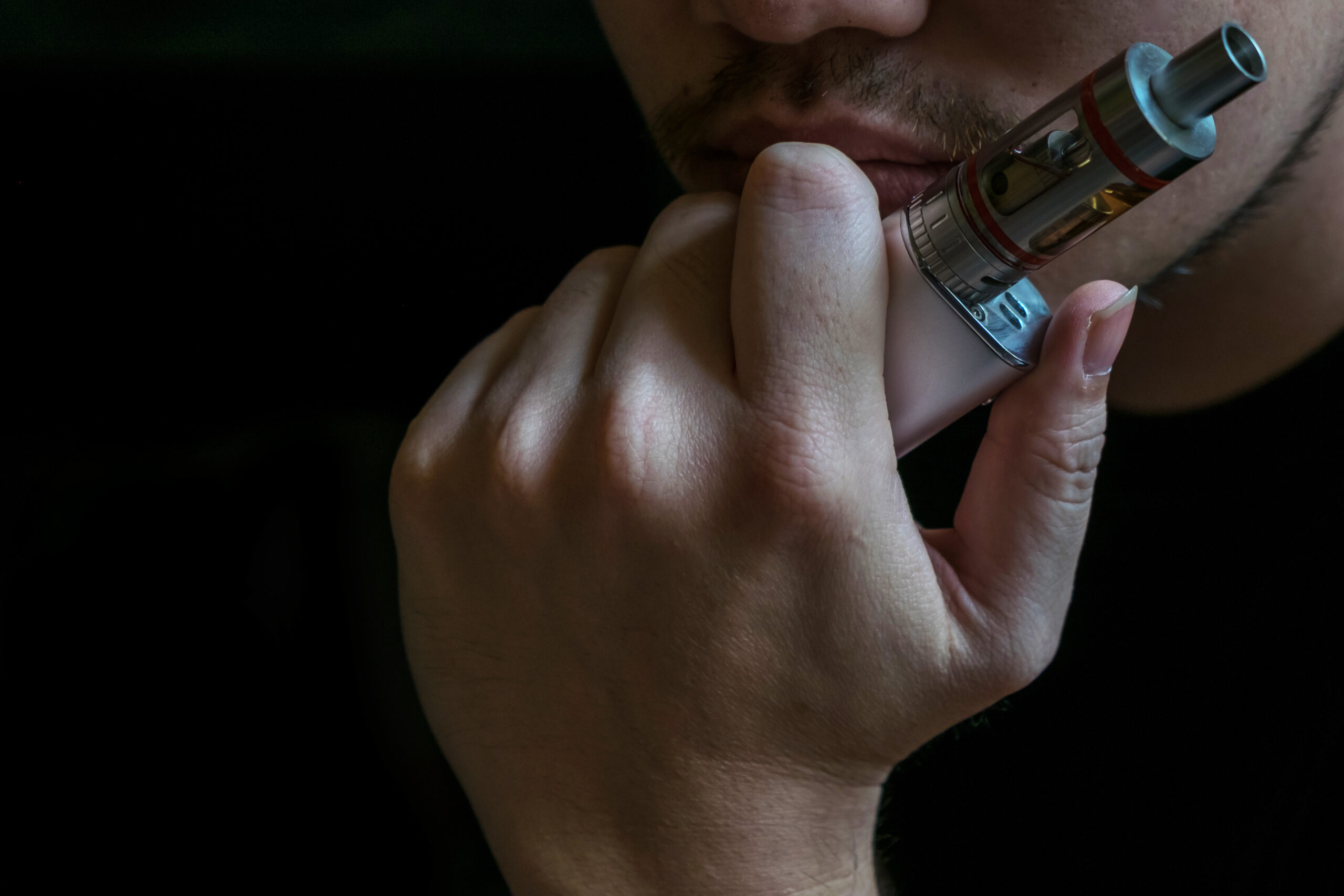
Tank systems — which have larger batteries and refillable e-liquid "tanks" — and modified devices (or "mods") soon emerged as popular options for vapers interested in increased power and customization. Joyetech introduced another innovation to the vaporizer market in the 2010s when they showcased 510 thread cartridges in disposable vaporizer units. To this day, 510 threads are the most widely used option for these popular portable vapes.
Although disposable vapes took off early on, more companies like Storz & Bickel, PAX, and Puffco introduced further customization and digitization to their models, giving cannabis consumers even greater flexibility and features. Today, consumers have access to a wide range of dry herb and liquid vaping options, including advanced features like temperature controls, connected mobile apps, and dab-friendly compartments.
5 Vape Trends In 2024
In 2024 you can expect to see some of the bigger trends we’ve seen in recent years continue to gain steam, while shifting consumer opinions and priorities will guide innovation and new offerings. What does this year have in store? Let’s break it down.
1. Strain-Specific Vapes
You may have a go-to flavor or strain, but, as they say, variety is the spice of life. Over the last few years, there has been an explosion in strain-specific vape pods and carts.
As cannabis scientists decode distinct terpene and cannabinoid combinations behind iconic strains, it's getting easier to create precise, strain-specific experiences to suit even the most refined palate. As this technology advances, be prepared to see even more vapes tailored to taste like individual iconic strains you know and love, alongside lesser-known and rare strains that you might not be able to access in flower or other forms.
2. Solution-Specific Vapes
Related to the strain-specific movement, more people are seeking out vapes for specific purposes, functions, or uses. Vapes are no longer reserved for R&R; there are plenty of situations where you may pick up a particular cartridge—for a boost of energy before a workout, stress relief on the go, or extra focus when you need to get down to business.
As cannabis legalization grows and consumption continues to become more mainstream, you can expect to see more solution-specific vapes for things like sleep, meditation, or creativity.
3. Live Rosin Vapes
Although many manufacturers use chemical solvents like butane for the extraction of cannabinoids, terpenes, and other compounds to produce the concentrates in vape oils, some people prefer the flavor and experience that solventless extracts can provide.
One solventless option that has been growing in popularity over recent years is live rosin. What makes live rosin so unique? Well, unlike other cannabis concentrates, this product relies on heat and pressure to extract cannabinoids and terpenes from flash-frozen flower. As a bonus for all you flavor chasers, this extraction method preserves high-quality, just-harvested terpenes for a delicious vaping experience.
4. Eco-Friendly Disposable Vapes
Eco-consciousness is becoming an increasingly important concern in the cannabis vaping community, and popular vape brands are looking to make their products biodegradable and carbon-negative.
While there are no standardized sustainable features across vapes just yet, some brands are already experimenting with paper tubes and polylactic acid (PLA) shells to offer the best of both worlds—convenience plus less landfill waste. It's a win-win for consumers and the planet, and you should expect to see more environmentally friendly options soon.
5. Wireless Charging Options
Anyone who's used a portable vaporizer knows how annoying it can be when they need a charge. While it's not the most challenging task to plug a vaporizer into a wall socket, wireless tech makes life much easier and charging way more convenient.
For vapers who want to move away from cables, it's worth looking into new vape models with wireless charging options. Although this standard still isn't the norm, you can expect to see this technology in more and more units going forward.
Explore the Best of Cannabis Vapes with Takoma
Vaping tech and culture are constantly evolving, and there's no telling what innovation will create the next big wave. With customizability, personalization and convenience being at the forefront of trending vape experiences, you can expect to see the most popular vapes offering strain and solution-specific products, along with a shift toward more solventless and environmentally focused offerings.
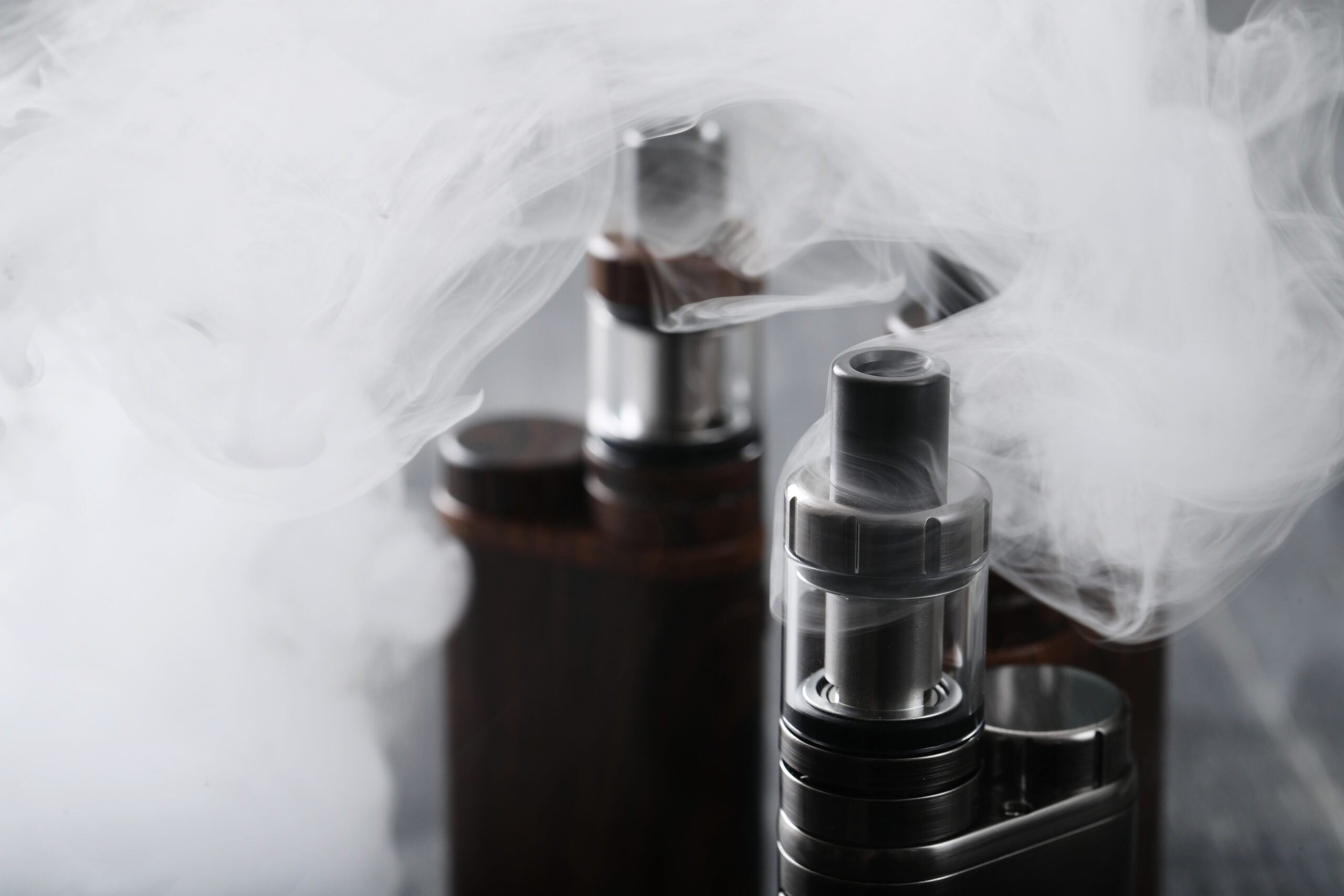
As DC’s most trusted dispensary, Takoma offers a wide selection of great vapes from popular vape brands like Alternative Solutions, District Cannabis and Molecular Farms—you can even filter by effects like Calm or Happy (and more) when shopping our online menu. Or, stop by in person to chat with our team about what we’ve got in stock.
You can also check out our guide to cannabis vaporization to learn more about how vaping works and how it compares to other products like flower or edibles. We look forward to seeing you!
What Is Myrcene? Your Guide to This Important Terpene
Mysterious, aromatic, and beguiling, terpenes are one of the most fascinating compounds in the cannabis ecosystem. As the primary olfactory components in the marijuana plant, terpenes contribute a dizzying array of scents, flavors, and potential medical benefits to cannabis strains. And without any doubt, the most crucial of them all is the topic of today’s post: the myrcene terpene.
What is myrcene, and what makes it so special? Sometimes referred to as “The Mother of All Terpenes,” myrcene plays an outsized role in the cannabis world, imparting its own list of effects and aromas while helping synergize the actions of other molecules. In this article, we’ll help you get your head around this cannabis power player, covering such questions as:
- What is myrcene?
- What does myrcene smell and taste like?
- What are some common myrcene terpene effects?
- What are some documented myrcene benefits?
Okay, let’s get rolling….
What Is Myrcene?
We’ve written previously about terpenes, and how they play a major role in determining the aromatic profiles of specific cannabis strains. Linalool, for instance, contributes a distinctive lavender-like aroma to classic Kush strains, while limonene adds a citrusy bite to strains in the “Purple” family. But the myrcene terpene is truly in a class of its own.
It is the most abundant terpene in cannabis by weight and the primary cannabinoid in the plant. While you might not pick out myrcene’s aroma on its own—more on that in a moment—you’d definitely notice if it weren’t there. And that’s the perfect excuse to turn to a discussion of the sensory experience of the myrcene terpene.
The Myrcene Terpene: Aromatic and Flavor Profile
Even if you’re new to cannabis, you’re probably familiar with “that weed smell.” And while myrcene is only one of the literally hundreds of terpenes found in cannabis, it contributes a distinctly earthy and clove-like scent— some compare its aroma with that of ripe fruit or aged vinegar—that at higher concentrations can turn downright pungent. Elsewhere in nature, myrcene is found in thyme, mangoes, lemongrass, and the hops that flavor most beers.
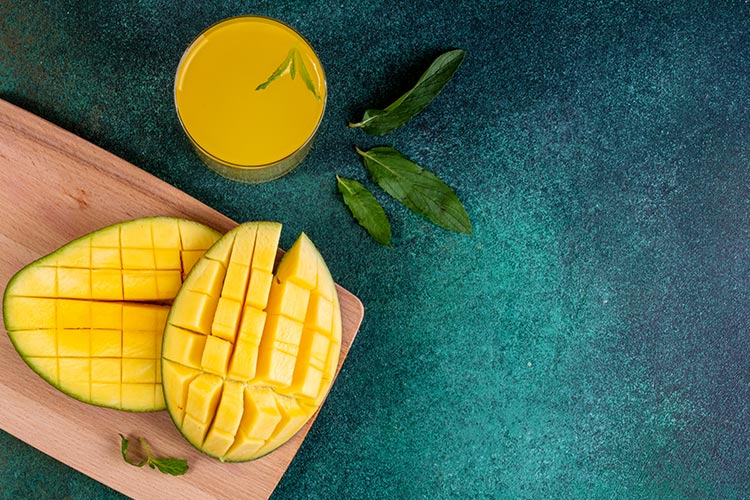 Which strains are high in myrcene? We’ll explore that in more depth in a moment, but given how prevalent myrcene is, it might be easier to find ones that aren’t! As such, myrcene makes an appearance in every strain, from the cerebrally stimulating Blue Dream to the heavy-hitting OG Kush to CBD-rich Harlequin, a favorite for inspiring creative spark.
Which strains are high in myrcene? We’ll explore that in more depth in a moment, but given how prevalent myrcene is, it might be easier to find ones that aren’t! As such, myrcene makes an appearance in every strain, from the cerebrally stimulating Blue Dream to the heavy-hitting OG Kush to CBD-rich Harlequin, a favorite for inspiring creative spark.
This brings up an important point about terpenes such as myrcene and the role they play in cannabis. While terpenes exert their own effects on our bodies and our minds, they’re completely distinct from cannabinoids such as THC and CBD. If you’re looking for specific medical effects such as treating many of the symptoms associated with anxiety and depression or insomnia, we recommend you start by focusing on cannabinoid ratios first, as they’ll ultimately have a greater impact.
Speaking of impact, let’s turn to the topic of myrcene benefits, and why this single terpene has such a major effect on the cannabis ecosystem.
What Does Myrcene Do? Effects and Benefits
As a growing body of research suggests, terpenes play an important role in terms of imparting specific medical and subjective effects. Still, most researchers agree that myrcene is the most important one of them all, synergizing the actions of other terpenes and potentially interacting with cannabinoids such as THC and CBD.
In fact, we humans have known about myrcene’s benefits for a far longer time than you might suspect. Long before anyone even knew what cannabis terpenes were, myrcene was already in use as a natural inflammation fighter. Today, clinical studies back this up, demonstrating that myrcene exhibits both anti-inflammatory and analgesic (or “pain-fighting”) qualities as well.
Myrcene is often cited as a potential sleep aid. And at least one clinical study points to the myrcene terpene’s potential in fostering deeper, more restorative rest. That may be the reason myrcene was historically implicated in the infamous “couch lock” syndrome associated with indica-leaning strains of cannabis.
That said, it appears that theories linking myrcene to indica and indica-leaning strains are but a pipe dream. As at least one study suggests, cannabis is far too complex an organism to characterize on the basis of a single terpene, even one as important as myrcene.
However, it appears that myrcene is definitively associated with one very unusual characteristic in cannabis: Playing a role in the so-called “entourage effect” (sometimes known as “ensemble effect”). In simple terms, the entourage effect is a phenomenon by which the natural compounds in cannabis interact to exert more powerful effects than they would on their own.
First proposed by Dr. Raphael Mechoulam—the Israeli researcher who did so much to unlock the secrets of cannabis, including first identifying THC as the source of the plant’s distinctive “high”—the idea behind the entourage effect suggests a vastly complex web of potential interactions between the many compounds found in cannabis.
While there’s far more to be learned, clinical research so far suggests the effect is real, even as its exact mechanisms remain unknown. For instance, one study from 2021 suggests that myrcene may work in partnership with THC and CBD to potentiate—or boost—their effects, though the evidence is somewhat cloudy. Another study shows that myrcene helps speed the transdermal absorption of cannabinoids, for instance those used in topicals.
This effect isn’t limited to myrcene. One study from 2011 suggests that the terpene alpha-pinene interacts with THC, helping to counteract the cannabinoid’s negative impact on short-term memory. Yet another study found that—while using an in vitro rodent model—several common terpenes directly activated cannabis receptor cells, suggesting that the interactions between these two major classes of cannabis compounds have been working in far closer partnership than initially suspected.
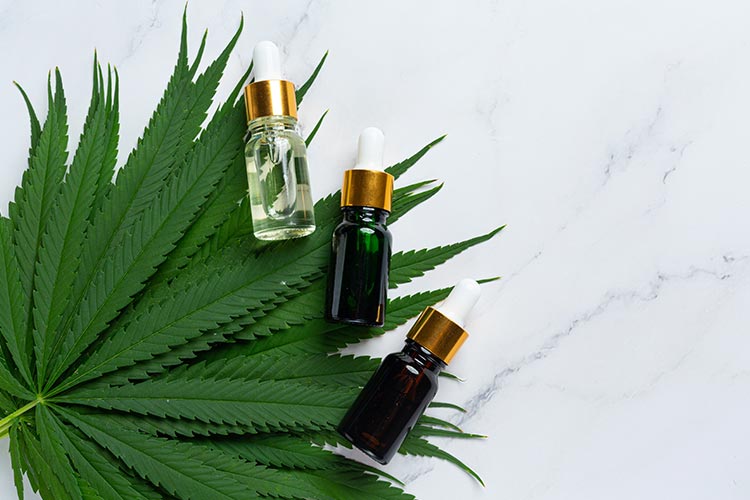 That said, there are dissenting opinions. One study from 2020 found the exact opposite, concluding that five common terpenes—including myrcene—all failed to elicit an ensemble effect by binding to the receptors in the endocannabinoid system.
That said, there are dissenting opinions. One study from 2020 found the exact opposite, concluding that five common terpenes—including myrcene—all failed to elicit an ensemble effect by binding to the receptors in the endocannabinoid system.
Introduction to High-Myrcene Strains
As we suggested earlier, it might be easier to identify strains that lack significant quantities of myrcene than to identify all the ones that feature it. Statistically, myrcene is the most abundant terpene found in cannabis. According to one source, it accounts for roughly 20% of all terpenes found in cannabis overall. That said, let’s take a little guided tour of a few of the most notable high-myrcene strains:
- Sunflower Purple Myrcene: From local DC cultivators Molecular Farms comes a myrcene-heavy strain that offers a great way to relax. Don’t let its vibrant green bud accentuated by bright orange pistils fool you, this strain will help you unwind and kick back after a long day.
- Blue Dream or Takoma Dream. This popular and readily available strain is characterized by sweet berry aromas and gentle cerebral effects. Its high myrcene content contributes to its anti-inflammatory and analgesic qualities.
- White Runtz: A potent, crystal-dusted strain, this classic cultivar is known for imparting a strong euphoric and energizing effect. Those resinous crystals should serve as a warning: This is typically a potent strain with a high THC content.
- Diesel: This family of pungently scented strains are generally known to exhibit classic uplifting and buzzy characteristics, thanks to their generous myrcene and limonene contents.
- Northern Lights: As one of the most famous indica strains of all, Northern Lights (or simply “NL”) is known for a long-lasting euphoria that helps reduce stubborn chronic symptoms such as pain, anxiety, and stress.
- Mango: This family of mango-scented strains hearkens back to an enduring cannabis myth. Because mangoes are naturally high in myrcene, so the saying goes, consuming one about 45 minutes before enjoying cannabis boosts the intensity of the high. While we can’t vouch for the practice ourselves, there’s certainly no harm in trying…
- Kush: We’d be remiss if we left out the Kush family, without doubt one of the most renowned in the cannabis world. Originally descended from the deeply relaxing strains grown in the foothills of the Kush Mountains of Northern India, these strains tend to be potent, flavorful, and memorable.
Explore Myrcene with DC’s Best Selection of Cannabis Flower, Edibles, and More
If reading this post has gotten you fired up about myrcene, we’d love to help you sample it for yourself! While our menu changes regularly based on what’s fresh, we typically stock a wide variety of cannabis products high in myrcene, including Sunflower Purple Myrcene by Molecular Farms, a premium flower that provides a healthy dose of this medically impactful terpene.
As the District’s #1 family-run dispensary, we take pride in helping our customers get the very most from their cannabis purchases. If you have further questions about the myrcene terpene (or any other cannabis-related questions), just ask! We’re here to help.
How to Use an RSO Syringe for Long-Lasting Relief
Have you ever been puzzled by the initials “RSO?” Trust us, you’re not alone. Far from being a brand-new cannabis strain, RSO—short for “Rick Simpson Oil”—is an ultra-potent cannabis extract that’s tailor-made for tackling the most stubborn of chronic conditions. Often dispensed from a cannabis oil syringe, it’s a vital tool for many cannabis patients looking to tame their symptoms the all-natural way.
Because RSO is so potent, it’s essential to know how to use an RSO syringe. And in today’s post, we’ll share everything we know about this powerful remedy, including:
- What is RSO?
- What’s the best way to take RSO oil?
- What’s the best RSO oil dosage?
- Where can I find a reputable source for RSO syringes source?
By the end of this article, you’ll be a bona fide expert in the use of the RSO syringe. And with that said, let’s get to work….
What Is RSO?
We’ve written previously about cannabis concentrates, the potent extracts that have practically taken the marijuana world by storm since their introduction roughly twenty years ago. And while RSO is technically a concentrate, there are a number of details that truly put it in a class of its own.
For one thing, unlike many cannabis concentrates and extracts, RSO was developed specifically for medical use. That’s not to say it’s exclusively for medical use, but it’s designed to be used in a fairly precise way to address chronic symptoms and conditions.
For another thing, RSO has a fascinating backstory. As we mentioned a moment ago, it takes its name from an actual person, in this case, Canadian engineer and cannabis activist Rick Simpson. After reading a study on the potential effects of THC on cancer cells in a rodent model, Simpson decided to create his own, ultra-potent THC product following a skin cancer diagnosis in 2003.
For skeptics, here’s where things get sticky. While Simpson claims that RSO helped cure his cancer, this was never independently verified by medical professionals. That said, in the following decades, many studies suggest that both cannabinoids and terpenes have the potential to kill cancer cells in vitro (that is, in laboratory settings).
On top of this, a large body of both clinical and anecdotal evidence supports the use of RSO to treat many of the symptoms of cancer, including chronic pain. It is also particularly useful for soothing nausea and stimulating the appetites of those undergoing chemotherapy treatment.
The original RSO was a THC-rich extract, with some batches reaching THC levels as high as 90 percent. That said, there’s no reason that RSO oil can’t contain CBD, the non-intoxicating “second cannabinoid.” Check our current selection of RSO syringes, and you’ll typically see at least one high-CBD product in our lineup.
All that said, while RSO syringes have potential recreational applications, we urge you to remember that it’s a highly potent product and should be used with care. In just a bit, we’ll share some guidelines for RSO oil dosage.
RSO’s Potential Benefits
As we mentioned just a moment ago, studies show RSO’s potential to treat many stubborn and serious medical symptoms. Let’s take a moment to dive into that topic a little further. Specifically, why is RSO so particularly suited to chronic symptoms?
When we inhale cannabis by smoking flower or using a vaporizer, the cannabinoids are absorbed through our lungs and take effect, typically within a few minutes at most. But with a cannabis oil syringe, that viscous cannabis extract passes through our liver. This means that while the effects take longer to come on—in some cases up to 2 hours—they also last much longer, in some cases up to 12 hours.
As you might guess, this makes RSO particularly well-suited to addressing long-running medical issues, and at our Takoma Park dispensary, one of the most common reasons customers come to us is to help them address chronic pain. As a number of studies have found, cannabis has the potential to help us address this potentially debilitating condition.
What’s more, an increase in medical cannabis use for chronic pain generally correlates with a decrease in the use of opioids, the class of highly addictive pharmaceutical drugs associated with an abnormally high number of both health risks and overdose deaths.
What other symptoms might RSO potentially help with? In addition to the ones we named earlier, one of the most common uses of medical cannabis is for managing the symptoms of anxiety and depression. And while there’s a robust debate as to whether THC actually increases or reduces the risk of anxiety, a number of studies suggest that using low to moderate amounts of the cannabinoid can help treat many of the symptoms associated with anxiety and depression.
Finally, cannabis has been shown to potentially mitigate the severity of insomnia, the common sleep disorder that affects roughly 30% of American adults at any one time.
How to Use an RSO Syringe: The Basics
Even if you’re used to cannabis vape pens, RSO oil can throw you for a loop. Why? Rather than being a pale or amber-colored liquid, RSO is typically a viscous, dark brown-to-black oil dispensed from a syringe.
Why use a syringe? A couple of reasons. For one thing, because RSO oil is so potent, it’s advantageous to be able to dispense very small dosages. The plastic syringes used to dispense RSO and other concentrates are typically labeled for very precise dosing. And for another, that thick oily liquid can readily stain clothing or furniture! Keeping it in a syringe helps reduce the possibility of an unwanted spill or discharge.
While RSO typically has an intensely herbal flavor and aroma, it’s a surprisingly easy product to use, so long as you follow proper dosing guidelines (more on that in a moment). Whether dispensed into a beverage or onto food, directly into the mouth or in an easy-to-swallow capsule, RSO is as versatile a cannabis product as you could hope to find.
If the idea of tasting a highly concentrated cannabis product doesn’t sound that appealing, some sources recommend placing the desired dosage on a small piece of bread, then folding the piece around the medicine completely to form a sort of edible capsule that can be swallowed with water. Of course, you can also purchase empty gel caps in bulk from many natural foods and supplement stores.
RSO Oil: Dosage, Safety Considerations, and Potential Side Effects
One issue with using cannabis medicine is that there are few, if any, “recommended doses.” Why not? Depending on their age, prior cannabis experience, and other variables, everyone has a slightly different reaction to cannabis medicine. In our long experience, it’s best to start with the lowest possible dosage, then work your way up until you’re getting the symptomatic relief you desire.
In the case of an RSO syringe, that “lowest dosage” is quite small indeed. Many sources, including Rick Simpson himself, recommend starting with a daily dose no larger than half a grain of rice and then increasing the dose slightly only after several days of use.
As we mentioned earlier, the onset time for RSO oil can be quite long, as much as two hours (often depending on the timing of your last meal). If you’re looking for a faster onset time, put the dose of RSO oil under your tongue and hold it there (swishing it around) for 30 to 60 seconds. This allows the cannabinoids to more quickly enter your bloodstream, which in turn enables the oil to take effect more quickly (typically within 45 minutes or less).
Regardless of your dosage, because of the time required for tinctures to take effect, wait at least 2 – 4 hours before taking a second dose. And to maximize the effects, wait at least 15 minutes before eating or drinking anything. Remember that you’re working with a highly concentrated and potent product.
Pro tip: The best way to ingest RSO is by combining it with fat-soluble food items like fatty oils, peanut butter, or good old-fashioned butter. Ingesting RSO with fat-soluble foods allows for the cannabinoids to become more readily available to the receptors, increasing the duration and strength of the effect.
What about the potential side effects of RSO? Some of the more common side effects of consuming too much THC (which RSO is full of) include:
- Dizziness
- Nausea
- Anxiety
- Paranoia
- Impaired perception or body movements
If you’re experiencing any of these symptoms after ingesting RSO oil, it’s important to remember that in the vast majority of cases, you’re not in any danger. While these sensations may be unpleasant, they typically pass quickly. Whenever consuming cannabis, we suggest staying well hydrated and using music to distract from any unpleasant anxiety. Avoiding unpleasant symptoms is yet another reason why we always caution those working with RSO (or any high-potency cannabis products) to: “Start low, go slow.” You can always take more, but never less!
Explore RSO Syringes, Cannabis Tinctures, Edibles, and More with Takoma
If you’re looking to browse the region’s best selection of RSO syringes, we’d love to help! As the District’s #1 family-run dispensary, we stock a wide variety of RSO oil products designed to help you tackle the toughest symptoms. If you have further questions about RSO oil (or any other cannabis-related questions), just ask! We’re here to help.
What Is MCT Oil? Uses, Benefits, and More
If you’ve ever studied a bottle of cannabis tincture, you may have noticed the words “MCT oil” on the label. But…what is MCT oil? While not a cannabis product itself, it’s a healthful and neutral-tasting oil that not only serves as a delivery system for cannabinoids such as THC and CBD, but may impart health benefits of its own.
If you’re interested in giving your wellness a boost with all-natural products, you’ll want to know how to use MCT oil. And in today’s post, we’ll share everything we know, including:
- What is MCT oil?
- What are the types of MCT oil?
- How our bodies metabolize MCT oil
- How to take MCT oil for maximum health benefits
Are you ready? Let’s begin.
What Is MCT Oil?
What’s in a name? “MCT” is short for ”medium-chain triglycerides.” In simple terms, it’s a type of fat that has some very intriguing properties when it comes to our health and wellness.
If you’re wary of the word “fat,” it’s important to note that dietary fats are an essential part of our nutritional intake. And because medium-chain triglyceride molecules are smaller than the long-chain triglycerides (LCT) that constitute most of the dietary fats we consume, they’re easier to digest. This means that they more readily enter the bloodstream, where they become a quick and healthful source of energy.
The best MCT oil typically comes from coconut or palm kernels. Separated from these nuts by a process called fractionation, pure MCT is either used on its own or blended with a proportion of LCT for specific uses.
How much smaller are MCTs than LCTs? It comes down to a question of atoms. While LCTs contain between 13 and 21 carbon atoms, MCTs contain between 6 and 12. The exact number of carbon atoms determines how different types of MCTs are defined and named:
- C6: Caproic or “hexanoic” acid
- C8: Caprylic or “octanoic” acid
- C10: Capric or “decanoic” acid
- C12: Lauric or “dodecanoic” acid
While there’s some debate as to whether C12 / lauric acid is actually an MCT, in practice, most MCT oils consist of C8 and C10 acids. While C6 oil presents some dietary benefits due to its digestibility, there’s a downside, and one you may already be aware of. Washington, D.C. is notorious for its many ginkgo trees. But the characteristically, shall we say…challenging aroma that develops when its seed shells drop to the ground? That’s C6 acid. Trust us, you don’t want that taste in your supplements!
MCT Oil and The Body
While a difference of a few atoms doesn’t sound like much, those carbon atoms add up. As we mentioned earlier, when we consume MCTs, their shorter chain length means they’re more rapidly broken down and absorbed by the body than are regular dietary fats. In particular, MCTs are quickly metabolized by the liver, where depending on your energy needs, they can be used as a rapid energy source or converted into ketones.
Ketones are compounds that are produced when the liver breaks down large amounts of fat. Unlike regular fatty acids, they’re able to cross from the blood into the brain, providing an alternative energy source as opposed to the glucose it ordinarily relies on.
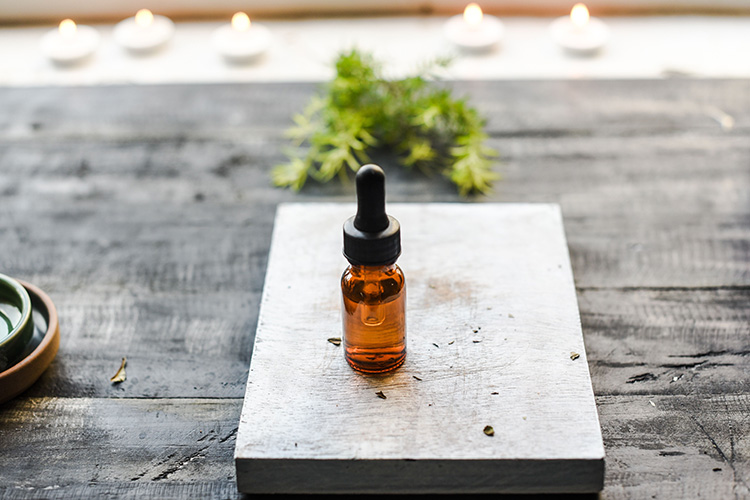
The upshot is that because of this rapid absorption, MCTs are less likely to be stored as fat. And while scientists agree that more research is needed, there are promising indications that this may help with weight loss.
How to Use MCT Oil: What the Research Says
On that note, let’s pivot to the topic of potential uses for MCT oil. Here’s what we know thus far.
According to one study, consuming MCTs may increase the feeling of fullness by boosting production of two hormones that help reduce our appetite. And another study found that a diet rich in MCTs triggered greater fat loss and fat burning when compared with LCT oils. That said, the increase is typically short-lived, as the body adapts within a few weeks.
Then there’s the topic of cholesterol. A number of human and animal studies such as this one suggest that MCTs may reduce cholesterol by triggering the release of bile acids, which play an important role in cholesterol metabolism. Another study on women found that consuming MCT via coconut oil in conjunction with a low-calorie diet reduced LDL (aka “bad” cholesterol) while boosting HDL (aka “good” cholesterol).
MCTs may also have an effect on blood sugar. According to one study, a high-MCT diet increased insulin sensitivity in adults with type 2 diabetes. Another study found that supplementing a normal diet with MCTs improved diabetes risk factors, reducing body weight, circumference, and resistance to insulin.
Uses for MCT Oil: As a Supplement
As the above research suggests, there are plenty of uses for MCT oil, both as part of a regular balanced diet and as a supplement for specific and targeted benefits. It’s easy to add MCT oil to your favorite foods and drinks; some of the most common uses include mixing it into smoothies, salad dressings, and coffee or tea. But…can you cook with MCT? We don’t recommend it, due to its relatively low smoke point.
How much MCT is safe? The answer depends both on how well you tolerate it, and what benefit you’re trying to get. Most experts recommend having a maximum of 4 to 7 tablespoons a day, ideally spread out throughout the day.
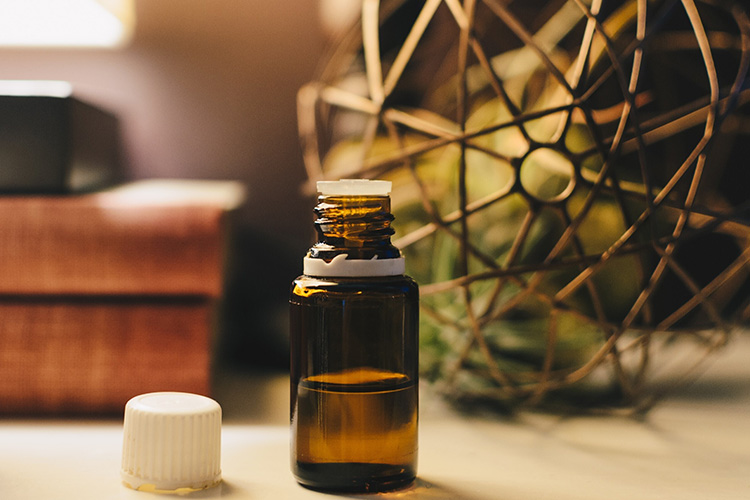
Pay close attention to how you feel afterward. Some common side effects include
- Stomach pain or cramps
- Gas or bloating
- Diarrhea
- Vomiting
If you’re in doubt as to whether MCT oil is right for you, we recommend you speak with a doctor or dietitian first to try and determine the best dose and course of action. While MCT oil is generally regarded as safe to use for the short- or medium-term, you should be careful when using it long-term.
How to Use MCT Oil in Cannabis Tinctures
Given all the potential upsides of MCT, it’s no surprise that it shows up in products such as cannabis tinctures. Fats are a perfect base for cannabinoids such as THC and CBD since they are lipophilic (or “fat loving”) compounds—but there are some important things to know when taking cannabis tinctures.
When we inhale cannabis, the cannabinoids such as THC and CBD pass through our lungs and take effect within a few minutes at most. But with tinctures, when swallowed or mixed with food or drink they take a good deal longer to take effect: about one and up to 2 hours. On the upside, those effects last quite a bit longer than with other forms of cannabis, in some cases up to 8 hours or more.
If you’re looking for a faster onset time, here’s a tip: Try putting the dose of cannabis tincture under your tongue and holding it there for 30 to 60 seconds. This allows the cannabinoids to more quickly enter your bloodstream, which in turn enables the tincture to take effect relatively quickly (typically within forty-five minutes or less).
What’s the right dosage of tincture? The amount will vary depending on your weight, your metabolism, and the strength of the symptoms you’re trying to address, among other factors. That’s why we suggest you begin with a small amount, starting with a quarter of an eyedropper (or even less) for three days. Based on how your symptoms respond, you may want to gradually increase the dosage, keep it where it’s at, or even reduce it to the minimum effective amount.
What’s the right dosage of MCT oil-based cannabis tincture? The right dose depends on the strength or potency of the tincture product you use. At Takoma Wellness, we sell tinctures with as little as 100 mg of THC per 15 ml bottle to as high as 1500 mg THC per 15 ml bottle. In addition to product potency, your correct dosage amount will vary depending on your weight, metabolism, and the severity of the symptoms you’re trying to address, among other factors.
That’s why we suggest you begin with a small amount, starting with as little as a single drop out of an eyedropper (included with the sale of every Takoma tincture), and titrating up each day until you find the greatest symptom relief, with the least side-effects. The next time you’re at the dispensary, ask your Takoma patient consultant for a Tincture Dosage Fact Sheet (available in-store only).
Regardless of your dosage, because of the time required for tinctures to take effect, wait at least 2 hours before taking a second dose. And to maximize the effects, wait at least 15 minutes before eating or drinking anything when you take it under the tongue.
DC’s Best MCT Tinctures: Explore Them Today!
If you’re looking to browse the region’s best selection of cannabis tinctures with MCT oil, we can help! As the District’s #1 family-run dispensary, we stock a wide variety of products designed for every taste and budget. If you have further questions about how to take MCT oil (or any other cannabis-related questions), just ask! We’re here to help.
What Is Limonene? A Citrusy Terpene Explained
Limonene is one of the most abundant terpenes in cannabis, blessing countless strains with its bright and zesty aroma. But there’s much more to this terpene than its signature smell and flavor. What is limonene and why should you care about this terpene? Let’s dive in!
What Is the Limonene Terpene?
Even if you’ve never used cannabis, you’ve almost certainly caught a whiff of limonene already. If you’re a fan of citrus fruits or use citrus scented soaps or cleaners, you probably come into contact with it on a regular basis.
As you can probably tell by its name, limonene is a citrusy terpene with a zesty lemony scent. Apart from cannabis, limonene can also be found in things like rosemary, juniper, mint, fennel, and in the peels of citrus fruits like orange, grapefruit, and lime. Limonene also has numerous industrial and practical uses and can be found in things like cosmetic and cleaning products, beverages, food, and pharmaceuticals.
Exploring Limonene: Terpene Effects
Like with many other terpenes found in cannabis, research indicates that the limonene terpene may have some therapeutic value. Here are a few potential limonene terpene effects and benefits that researchers are investigating.
Stress and Mood: A recent animal study found that limonene may have positive effects on anxiety. Mice that were injected with limonene before behavioral analysis displayed inhibited anxiety-related behavior and elevated levels of the neurotransmitter dopamine, which is linked to feelings of motivation and satisfaction.
Antimicrobial: Many terpenes have shown promise in fighting off certain kinds of bacteria, and limonene is among them. A 2021 study found that limonene “effectively inhibited bacterial growth” of the Staphylococcus aureus bacteria (staph) by damaging the bacteria’s cell membranes. Another study from the same year also found that Escherichia coli (E. coli) bacteria treated with limonene were damaged.
Antifungal: A 2009 study found that limonene exerted a “potent antifungal effect” against the T. rubrum fungus. Another study found that limonene similarly inhibited the C. Albicans fungus growth “by cell wall/membrane damage induced oxidative stress that leads to DNA damage”.
Despite all of these promising findings, it should be noted that the dosage (amount) of limonene required to produce these limonene terpene effects varies and that research into these effects and benefits is ongoing.
Strains High in Limonene
There are several strains that are high in the limonene terpene. If you’d like to get a taste of this zesty terpene, here are a few popular strains known for their limonene content:
- Do-Si-Dos
- OG Kush
- Kosher Kush
- Berry White
- Wedding Cake
Be sure to check out our live online menu to see which of these strains we currently have in stock, or come by Takoma Wellness today to browse a wide selection of cannabis strains and products including many that are high in the limonene terpene. Our patient care team will be happy to help you find a zippy limonene-rich strain. We look forward to seeing you!
Medical Marijuana for Sleep: Tips and Best Cannabis Strains
It’s no secret that more and more patients with trouble sleeping are turning to medical marijuana. In fact, a 2020 survey in the Journal of General Internal Medicine showed that poor sleep is one of the main reasons patients seek medical marijuana in the first place.
If you’re one of the nearly 70 million Americans that suffers from sleep problems every year, don’t give up. Medical marijuana may offer a solution to your bedtime sleep sorrows. We’ll take a look at how medical marijuana may help improve your sleep, as well as some of the best cannabis strains (indica and otherwise) for insomnia, in this post.
Marijuana and Sleep: How Does it Work?
Okay, so we know that sleep is one of the biggest reasons that patients use medical marijuana. But what does science actually say about cannabis’ effectiveness as a sleep aid?
A Recent Clinical Study
Fortunately, we have some clinical data on the subject. One team of researchers at the University of Western Australia’s Sleep Centre examined how cannabis extract affected participants suffering from sleep problems.
The study, published in 2021, was a double-blind, placebo-controlled study. That means some of the participants received cannabis extract while others were simply given a sublingual application with no actual effects. The researchers who administered both the placebo and the cannabis extract didn’t know which was real, a common scientific technique that works to eliminate any sort of researcher bias.
The study involved 24 participants and took place over two weeks. Participants kept a sleep diary over the course of the study to record any changes in their sleep pattern. Researchers also administered a comprehensive sleep test, called a polysomnography, during the course of the study.
The Results
Overall, the study appeared to show that cannabis could be an effective way to fall asleep faster and stay asleep throughout the night. Participants also reported that they felt more well-rested upon waking up in the morning. Moreover, the study showed that cannabis was fairly well-tolerated among all the participants. There were no serious adverse effects, suggesting that cannabis may be a safe way to improve sleep as well.
Cannabis for Sleep: Best Ways to Use Medical Marijuana
So we’ve established that cannabis can provide effective relief for those that suffer from sleep troubles. But how exactly can you best utilize marijuana to improve a night’s sleep?
That depends on what exactly you’re trying to accomplish. Two of the main active ingredients in cannabis, THC and CBD, each play their own role in changing sleep patterns. According to the Sleep Foundation, THC could be an effective way to deal with sleep apnea, to reduce nightmares related to PTSD, and to alleviate chronic pain keeping patients awake through the night.
In contrast, CBD could soothe REM sleep problems and eliminate daytime sleepiness, one of the most prominent side effects of insomnia. You can choose products with different THC to CBD ratios to make the most of these different benefits.
Use Edibles and Time Them Right
You also may want to consider using edible cannabis products to help get better sleep. Edibles have potent, long-lasting effects, sometimes lasting 6 hours or more. As a result, they may be an excellent choice for helping you stay asleep throughout the night. However, you’ll want to make sure you take them at the right time. Edibles can take up to an hour to kick in, though, so make sure you plan ahead and take them at least an hour before bedtime.
Are Indica Strains the Best Cannabis for Sleep?
There’s plenty of conventional wisdom out there that talks about how sativa strains are more energizing and euphoric, while their indica counterparts are more relaxing and best for improving sleep.
While many indicas do demonstrate these properties, not all of them do. Instead, a plant’s cannabinoid and terpene content will determine these effects. In particular, myrcene (one of the most common cannabis terpenes) appears to improve sleep according to some data.
The Best Medical Marijuana for Sleep
Finally, the moment you’ve all been waiting for! Here are some of the best cannabis strains that medical marijuana patients visiting our dispensary have reported help them with sleep.
Granddaddy Purple
It should come as no surprise that one of the best cannabis strains for medical marijuana patients seeking better sleep is this legendary indica. Grandaddy Purple made waves when it burst onto the scene in 2003, and it’s solidified itself as a top-shelf indica in the 20 years since. This cross between Purple Urkle and Big Bud has a high THC content, usually around 25% or higher. That makes it a perfect nightcap to tuck you in after a long day.
Sunflower Purple Myrcene
This heavy indica is loaded with myrcene, the perfect terpene for lulling you into a deep, restful sleep. Sunflower Purple Myrcene is so packed with this terpene that they put it in its name. This cannabis strain is also an indica, making it one of the best strains out there for medical marijuana patients seeking better sleep. Its THC level usually rests around 20% to 25%, making it accessible for experiences and newer cannabis consumers alike.
Hindu Kush
One of the original indica strains to make its way to Western cannabis consumers is also one of the best medical marijuana strains for sleep. With a THC content around 25%, Hindu Kush has lent its genetics to countless indica strains since its introduction to breeders in the 1960s. It’s a great strain for banishing daily stress and anxiety and lulling you into a comfortable, tranquil snooze.
Find the Best Strain for Sleep and More at Takoma Wellness
You’re not going to want to sleep on the indica cannabis strains in this post if you’re a medical marijuana patient trying to get better rest. Fortunately, you can find all of them at Takoma Wellness.
That’s not all, though—we also carry a huge variety of cannabis products for any ailment. To learn more, check out our online menu. And if you’re not a medical marijuana patient yet, we can help you complete your application. We’re looking forward to seeing you!




